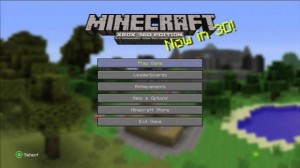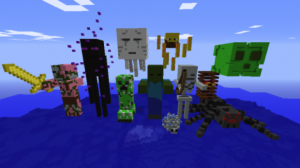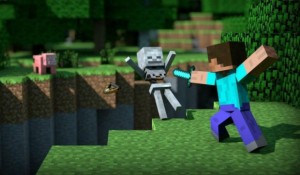Earlier this year Microsoft acquired indie developer Mojang for $2.5 billion. It was a big move, and it left many fans wondering how it might effect Mojang’s hit game Minecraft. In a recent interview with IGN, Xbox head Phil Spencer talked about the desire to meet the needs of the game’s community. He said that Minecraft 2 may not make the most sense, and his words were followed by every fan of the game breathing a sigh of relief. Minecraft already does what it was created to do perfectly, why would it ever need a sequel?
Why it works so well
From the beginning, Minecraft was a game all about building. Not only was the gameplay about letting you create whatever you wanted, but the game itself was designed to be built up into something better. If you look at its original release and look at it now, it’s a very different game. Thanks to Mojang’s constant support with free updates, the game was able to constantly grow into something more grand. Content is constantly being added, and bugs are always being squashed. A sequel could never improve on the Minecraft formula, because its formula is all about improvement. A sequel would be a radical shift away from the pre-established normal of the game, changing it from a single evolving entity to a standard game series with annual static sequels.
Now that Microsoft owns the game, the company’s best course of action to keep customers happy would just be to keep the updates rolling. Minecraft is now on more platforms than ever, catering to millions of players. Everyone who has purchased the game bought it knowing it would receive updates, that the developers would be adding more fun content. It’s essentially an Everlasting Gobbstopper: for a one-time price you get something you can never finish and that will remain good for years to come. If a sequel comes along it will make the original go stale, forever stopping progress in your old worlds. It’d be like a new Skylanders game that wasn’t compatible with last year’s figures, or a new box of Legos that didn’t fit your old pieces. New content shouldn’t intend to be a rigid standalone package; it should be an addition to the big Minecraft toy box.
Worst-case scenario
But what if, in some bizarre alternate future, a Minecraft 2 is made? Would it live up to its name? Would anyone care? What would it have to be to feel like a true sequel?
If Minecraft 2 rolls around Mojang and Microsoft can’t just add some new content. They need to add loads of new content, like the equivalent of 10 years’ worth of updates all rolled out at once. We’ll need new things to explore, something more than just new biomes and ancient structures. The most obvious option is new alternate realms like The Nether and The End. It’d be pretty sweet if we could explore space a la Really Big Sky, letting us visit and mine numerous randomly generated planets. More places to visit would also mean more building materials and new things to craft. It’d be nice to see new redstone elements, new light sources, new decorations — new everything! Maybe go the Banjo Kazooie: Nuts ‘n’ Bolts route and let us build our own custom vehicles to navigate the world faster. There are also so many odds and ends they could throw in, like an improved combat system and custom skins on consoles.
The possibilities for a sequel are limitless, but let’s face it, no matter how great it could be we’ll always wish it was just done as an update.
Other options
In the end, we have to remember Microsoft is a company, and the ideal future of endless free Minecraft updates isn’t going to bring in revenue. There’s many ways Microsoft could earn money from its new property without making a sequel. Maybe it’ll focus more on monetizing the game, delivering more skin and texture packs to consoles. Microsoft has provided some good paid content in the past, and as long as it’s kept cosmetic everyone can enjoy the game without spending extra cash. Maybe the series will get spin-off games instead of a sequel, releases that utilize the property without messing with the core experience. Microsoft could easily slap some creepers onto a free-to-play mobile puzzle game. It could also make small ID@Xbox games, maybe a randomly generated Diablo-esque dungeon crawler or a four-player party game. Minecraft has become a very recognizable brand, with its name and characters appearing anywhere that will garner a lot of attention.
For better or worse, we don’t know what the future holds for Minecraft. Despite Microsoft’s stated good intentions, maybe a sequel is inevitable. While we still have to wait and see if Phil Spencer’s words hold true, his statement did prove one important thing: Microsoft has a pretty good understanding of what Minecraft is, and what its community would want. The company may not be the ones that created the game, but it’s shown that the future of our beloved game rests in good hands.




